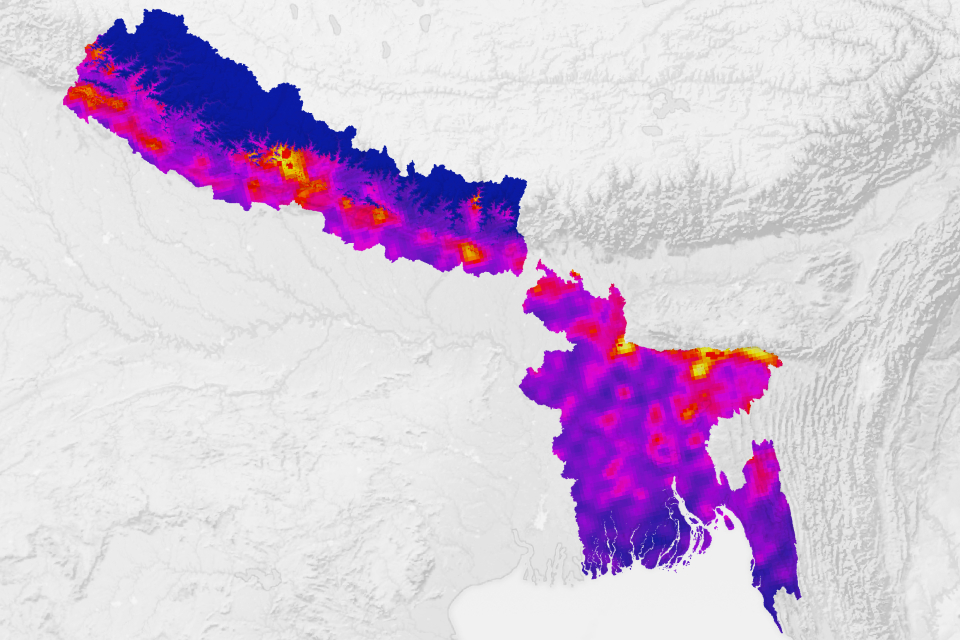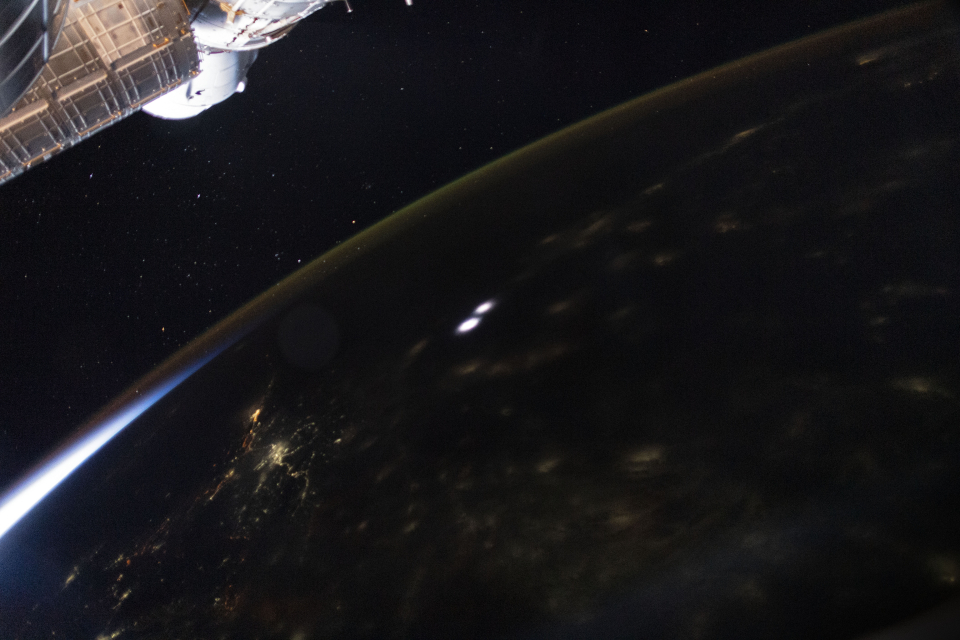Publié le 11 février 2022
In August 2021, a wedding in northwestern Bangladesh took a tragic turn when lightning struck and killed 17 guests along the Padma River during a downpour. Though such mass casualty incidents are rare, fatal lightning strikes in Bangladesh and nearby Nepal are not.
Hundreds of people lose their lives to lightning in these two countries each year, and hundreds more are injured. Due to sharp increases in lightning deaths and injuries in Bangladesh and Nepal in recent years compared to the past few decades, the problem is getting more attention from both scientists and government officials. As awareness of lightning dangers grow, satellite observations and ground-based lightning networks are playing key roles in sizing up the extent of the problem and helping people formulate strategies to minimize the risks.

With lightning killing hundreds of people in Bangladesh and Nepal each year, researchers think space-based observations could help reduce risks.
The number of reported lightning deaths and injuries in Bangladesh has increased from dozens of deaths per year in the 1990s to more than 300 per year now. Trends are more difficult to determine in Nepal due to a lack of long-term data, but one recent study estimated about 100 people are killed by lightning there each year. For comparison, lightning kills about 17 people per year in the United States, a country with more than 10 times as many people as Nepal. The photograph below, taken by an astronaut on the International Space Station, shows lightning flashing over Nepal in 2021.
Lightning experts cite a variety of reasons for the apparent increases in deadly strikes, including population growth, better reporting, and increasing storminess due to climate change. Though the cause is not clear, the timing is quite clear.

Lightning on September 14, 2021 as captured from the International Space Station ISS
“The frequency of lightning is highest in Bangladesh during the pre-monsoon period from mid-April to June,” said Ashraf Dewan, a remote sensing scientist at Curtin University. Using observations from NASA’s Lightning Imaging Sensor (LIS), he found that 69 percent of the lightning strikes in Bangladesh occur during the period before the heaviest seasonal rains set in. And lightning flashes were particularly common in the morning. The LIS instrument flew on NASA’s Tropical Rainfall Measuring Mission (TRMM) satellite from 1997 to 2015, and a duplicate sensor has operated on the International Space Station since 2017.